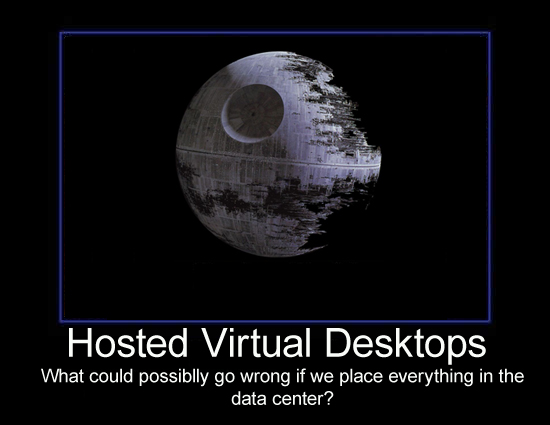Cloud computing, or as I like to call it the return of the mainframe and thin-client computing architecture – only cloudier, has been creating a lot of interesting discussion throughout IT recently.
Cloud computing, which we will define as any service or set of services delivered through the Internet (Cloud) without requiring additional infrastructure on the part of the organization. Although a broad definition it encompasses everything from storage and capacity services to applications like CRM or email to development platforms and everything in between that is delivered and accessed through the Internet (Cloud).
Obviously the concept of ubiquitous broadband connectivity combined with a highly mobile workforce enabled to productivity, independent of location and with the promise of limited, if any, additional infrastructural costs, offers new levels of efficiencies for many organizations looking to leverage and extend their shrinking IT budgets.
There is little doubt that cloud computing offers benefits in how organizations look to drive greater benefit from their IT dollars, but there are also many trade-offs that can dramatically reduce, and negate the benefits altogether, understanding these trade-offs will allow an organization to make the right decisions.
As with most advancements in computing, security is generally an afterthought, bolted on once the pain is great enough to elicit the medication. Sort of like the back pain of IT, security enhancements tend to result once the agility (availability, reliability, etc) is somehow inhibited or because it is prescribed as a result of a Doctors visit (compliance audit) cloud computing is no different.
But before we can understand the strengths or inadequacies of cloud computing security models we need to have an understanding of baseline security principles that all organizations face, this will allow us to draw parallels and define what is and isn’t an acceptable level of risk.
Again for the sake of brevity I will keep this high-level, but it really comes down to two main concepts; visibility and control. All security mechanisms are an exercise in trying to gain better visibility or to implement better controls all balanced against the demands of the business. for the most part the majority of organizations struggle with even the most basic of security demands. For example visibility into the computing infrastructure itself;
- How many assets do you own? How many are actively connected to the network right now? How many do you actively manage? Are they configured according to corporate policy? Are they up to date with the appropriate security controls? Are they running licensed applications? Are they functioning to acceptable levels? How do you know?
- How about the networking infrastructure? databases? application servers? web servers? Are they all configured properly? Who has access to them? Have they been compromised? Are they secure to the universe of known external threats? How do you know?
- Do internal applications follow standard secure development processes? Do they provide sufficient auditing capabilities? Do they export this data in a format that can be easily consumed by the security team? Can access/authentication anomalies be easily identified? How do you know?
- What happens when we an FTE is no longer allowed access to certain services/applications? Are they able to access them even after they have been terminated? Do they try? Are they successful? How do you know?
These are all pretty basic security questions and it is only a small subset of issues IT is concerned with, but most organizations cannot answer any one of them, let alone all of them, without significant improvement to their current processes. It is fair to say that the majority of organizations lack adequate visibility into their computing infrastructures.
Of course the lack of visibility doesn’t imply a lack of control;
- Are assets that are not actively managed blocked from accessing corporate services? Are they blocked from accessing internal applications? Based on what criteria – lack of policy adherence? How granular is the control? And if you lack visibility how can you be sure the control is working?
- What controls have you implemented to prevent external access to internal resources? Does this apply to mobile/remote employees? How long after an employee is released does it take to remove access to all corporate resources? What authentication mechanisms are in place to validate the identify of an employee accessing corporate resources? Without visibility how do you know?
- What controls are in place to ensure the concept of least privilege? What controls are in place to ensure internal applications (web, non-web, or modifications to COTs) adhere to corporate secure coding standards? If you lack visibility how do you know?
- What controls are in place to ensure that a malicious actor cannot access internal corporate resources if they have stolen the credentials of a legitimate employee? How do you know the controls are adequate?
Again, just a small subset of the controls IT must be concerned with. Like the problem of visibility most organizations are barely able to implement proper controls for some of these, let alone the universe of security controls required in most organizations. Let me state, in case it isn’t obvious, the goal of security isn’t to prevent all bad things from occurring – this is an unachievable goal – the goal of security is to implement the needed visibility and controls that allow them to limit the probability of a successful incident from occurring, and when an incident does occur to quickly limit it’s impact.
So what happens when we move services to the cloud? When we allow services to be delivered by a third party we lose all control over how they secure and maintain the health of their environment and in many cases we lose all visibility into the controls themselves, that being said…Cloud Computing platforms have the potential to offer adequate security controls, but it will require a level of transparency the providers will most likely not be comfortable providing.
Our current computing paradigm is inherently insecure because for the most part it is built on top of fundamentally insecure platforms, there is some potential for cloud computing to balance these deficiencies, but to date there has been little assurances that it will. Some areas that require transparency and that will become the fulcrum points of a sound cloud computing security model:
- Infrastructural security controls
- Transport mechanism and associated controls
- Authentication and authorization access controls
- Secure development standards and associated controls
- Monitoring and auditing capabilities
- SLA and methods for deploying security updates throughout the infrastructure
- Transparency across these controls and visibility into how they function on a regular basis
Most organizations struggle with their own internal security models, they are barely able to focus their efforts on a segment of the problem, and in many cases they are ill-equipped to implement the needed security mechanisms to even meet a base level of security controls, for these organizations looking to a 3rd party to provide security controls may prove to be beneficial. For organizations that are considered to be highly efficient in implementing their security programs, are risk adverse, or are under significant regulatory pressures, they will find that cloud computing models eliminate too much visibility to be a viable alternative to deploying their own infrastructure.
I will leave you with one quick story, when I was an analyst with Gartner I presented at a SOA/Web Services/Enterprise Architecture Summit a presentation titled “Security 101 for Web 2.0” the room was overwhelming developers who were trying to understand how to better develop and enable security as part of developing the internal applications they were tasked to develop. The one suggestion that elicited the greatest interest and most questions was a simple one; develop your applications so that they can be easily audited by the security and IT teams once they are in production, enable auditing that can capture access attempts (successful or not), date/time, source IP address, etc…the folks I talked to afterwards told me it was probably the single most important concept for them during the summit – enable visibility.
In part 2 we will take an in-depth look into the security models of various cloud computing platforms, stay tuned for more to come….
Some interesting “Cloud” Resources that you can find in the cloud:
- Amazon Web Services Blog (here)
- Google App Engine Blog (here)
- Microsoft Azure Blog (here)
- Developer.force.com Blog (here)
- Gartners Application Architecture, Development and Integration Blog (here)
- The Daily Cloud Feed (here)
- Craig Balding – Cloudsecurity.org (here)
- James Urquhart – The wisdom of Clouds (here)
- Chris Hoff – Rational Survivability (here)









